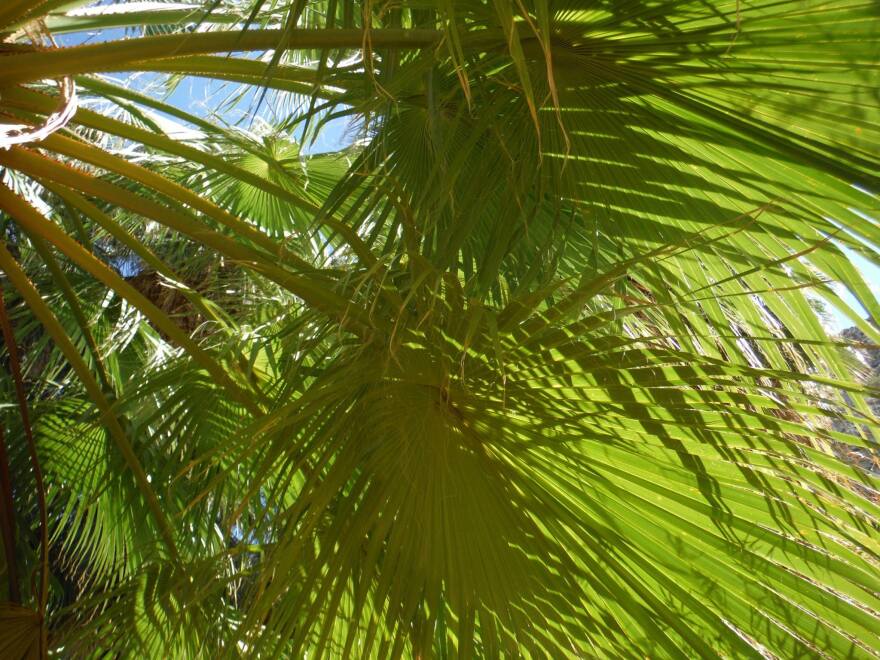Twenty-five hundred palm species are known worldwide, yet the Desert Fan Palm is the only one native to the Western U.S. Also called the California Palm, it happens to be the largest of the 14 species in the country and can live up to 250 years.
Populations of the Desert Fan Palm thrive in riparian habitats such as springs or fault lines where groundwater exists closer to the surface, within the Colorado Desert portion of the Sonoran Desert and the Mojave Desert.
They grow in dense stands reaching 75 feet tall and are used by the Cahuilla tribal people, whose ancestral lands essentially overlap this species’ habitat. The oases were ideal village sites since water was available; the palms provided shade, fuel, building, basketry and clothing materials.
A 1950s study estimated more than 100 Desert Fan Palm groves and 11,000 trees. Recently, populations have dramatically contracted because of land use changes. Palm oases have been destroyed by agriculture and urban development. Remaining populations also struggle with a lowering water table.
Groundwater pumping in the town of Twenty-Nine Palms adjacent to Joshua Tree National Park is likely responsible for a 10-foot drop in the water table. And, studies at Seventeen Palms in Anza Borrego State Park show a lack of new young trees. The species may go locally extinct if spring flow continues to diminish. Water use decisions in the Southwest may determine the long-term fate of this unique and wonderous species.
This Earth Note was written by Carrie Calisay Cannon and produced by KNAU and the Sustainable Communities Program at Northern Arizona University.








